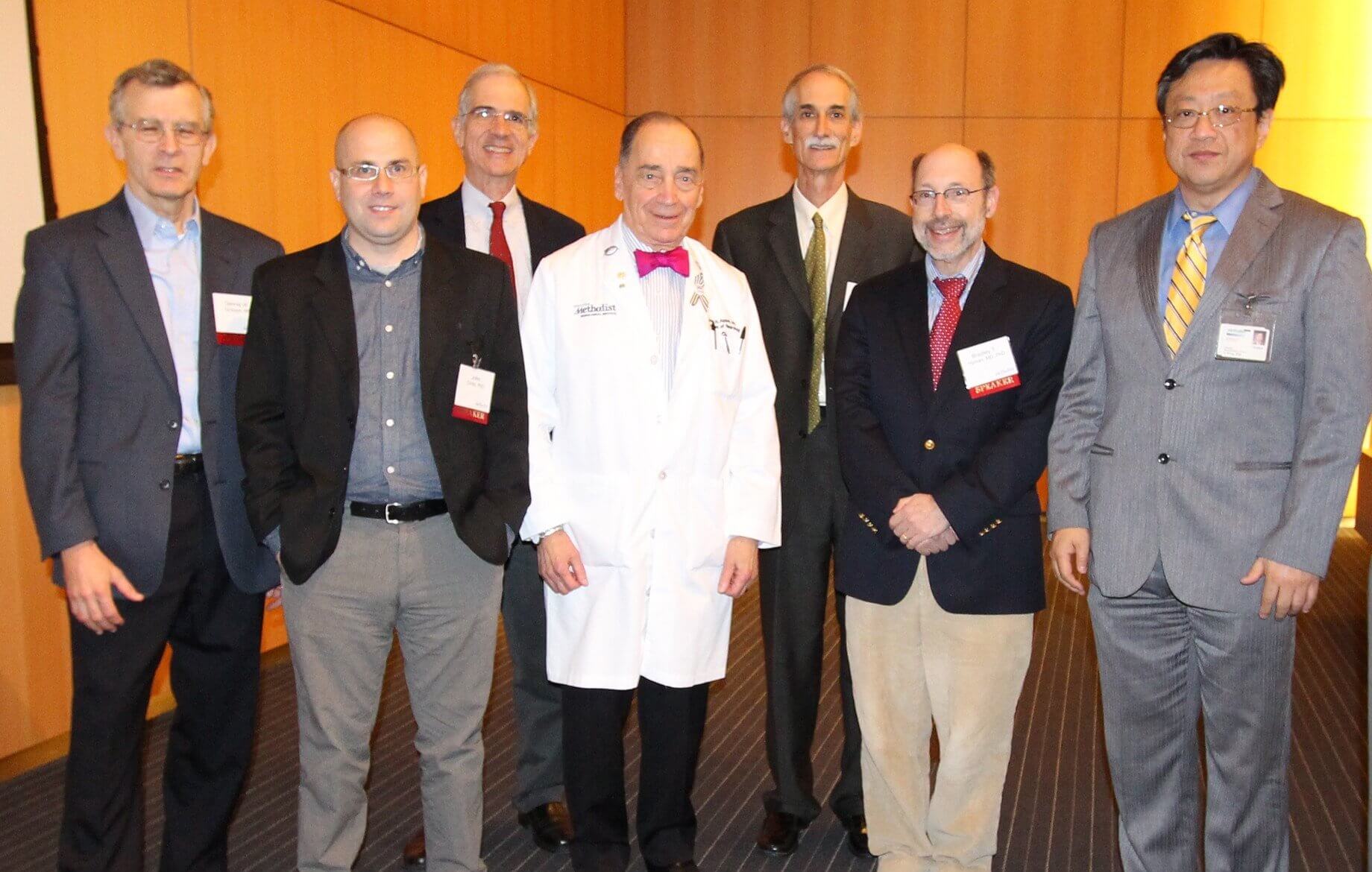Preventing Alzheimer’s major focus of national symposium

People predisposed to Alzheimer’s disease can have detectable brain changes for more than 10 years before the onset of symptoms. This period of time is significant as more clinical trials become available that try to stall the disease.
Houston Methodist Hospital hosted more than 100 researchers, clinicians and caregivers at the fourth annual Nantz National Alzheimer Center Symposium on Friday, Feb. 20. The symposium’s theme focused on “Alzheimer Prevention Trials: Coming Soon to a Location Near You.”
Amyloid PET technology already allows clinicians and researchers to see abnormal amounts of amyloid depositing in the brain more than 10-20 years before the initial symptoms.
“But there appears to be a point in the development of Alzheimer disease where removing amyloid does not reverse or prevent cognitive decline. It is crucial that clinicians are aware of our ability to detect brain amyloid before symptoms appear and of ongoing trials to evaluate the effectiveness of lessening amyloid deposits,” said Joseph Masdeu, M.D., Ph.D., medical director of the Nantz National Alzheimer Center and symposium program director.
Masdeu said that more physicians across the United States need to advise patients’ families of the existence of detectable brain changes before any symptoms, so people can decide whether to participate in clinical trials focused on forestalling the disease.
Masdeu, who was the first physician-scientist to detect an early imaging feature of Alzheimer’s disease, will focus on neuroimaging’s role in determining why abeta amyloid is an important therapeutic target in Alzheimer’s disease.
Participants also discussed strategies and results of lowering amyloid in people with Alzheimer’s disease, as well as the current approach to the presymptomatic stages of the disease. Other distinguished speakers included Bradley T. Hyman, M.D., Ph.D., Massachusetts General Hospital; John Cirrito, Ph.D., Washington University in St. Louis School of Medicine; Dennis Dickson, M.D., Mayo Clinic; Martin Sadowski, M.D., Ph.D., NYU Pearl Barlow Center for Memory Evaluation and Treatment; Rachelle Doody, M.D., Ph.D., Baylor College of Medicine; and Stephen Salloway, M.D., M.S., Brown Medical School.
Of the more than five million Americans living with Alzheimer’s disease, almost two-thirds are women. American women are twice as likely to die of Alzheimer’s disease as they are from breast cancer. According to the Alzheimer’s Association, someone develops Alzheimer’s every 67 seconds. In 2013, 15.5 million caregivers provided an estimated 17.7 billion hours of unpaid care valued at more than $220 billion.




